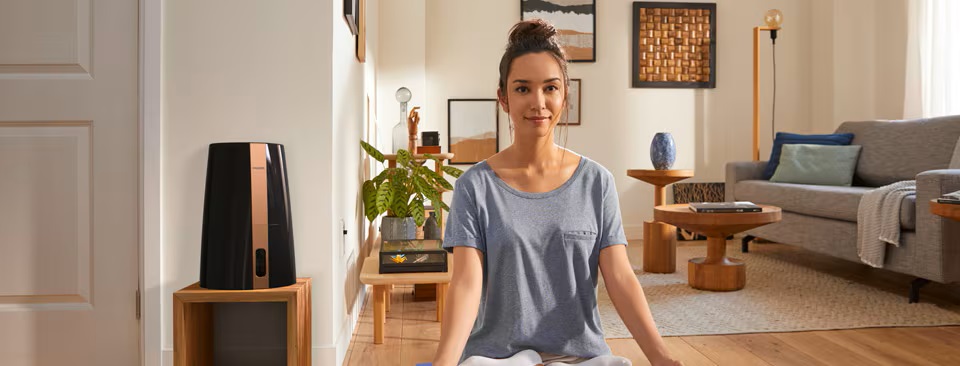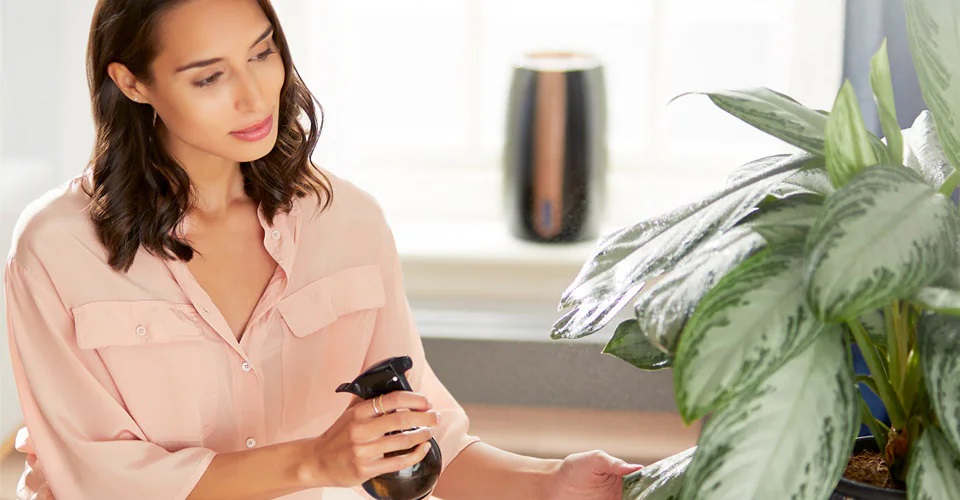Reading time: 5 Min

How to measure humidity levels at home
When we think about how warm or cold we like our homes, we often forget to consider the difference that achieving the right level of humidity can make. But achieving a good humidity level is important and it’ll help you feel even more comfortable at home. In this guide we’ll look at what is the best humidity for house and how to measure humidity indoors.
What is a good humidity level?
In terms of the recommended humidity at home, a good general guide is that the level should be between 30% and 60% in all rooms of your house. Should the levels fall outside of this optimal indoor humidity range, you might find the dry air causes:
- Damage to plaster, wooden floors, and furniture, including cracking
- An increase in static
- Dry skin, eyes and hair
- Dry throat and cough – this can lead to uncomfortable night’s sleep and an increased potential for snoring
In contrast, if levels go above 70%, this can result in other problems, including:
- Dehydration
- Fatigue
- Muscle cramps
- Damp and mould – particularly an issue in the bathroom
- Respiratory condition flare-ups
As you can see, achieving the optimal humidity for house is not only good for the building, it’s good for your health and wellbeing, too.

How to measure humidity in a room
When it comes to knowing how to measure humidity indoors the most accurate method is to use a machine called a hygrometer. This is a specialist piece of equipment that measures temperature and humidity. But you don’t have to invest in a hygrometer to get a good insight into how to measure humidity in home; you can give the following methods a try instead:
Measure for optimal indoor humidity – wet and dry bulb thermometer method
You’ll need two thermometers for this method. Follow these steps:
- Leave one thermometer as it is – the dry thermometer.
- Wrap a wet piece of cloth (room temperature water) around the bulb of the other thermometer – the wet thermometer.
- Place your thermometers in the room where you want to test the humidity level. It’s important you do all of the steps in the same room, to make sure that the mercury always starts recording the temperature in the same conditions.
- Leave for around five minutes, and then note the temperatures of each thermometer.
- Subtract the wet thermometer temperature from the dry thermometer temperature to find what is called the depression value.
- You can then use an online calculator or chart (don’t worry, they’re easy to find!) and enter the reading to get your humidity level.
Measure for optimal humidity for house – ice cube method
Who’d have thought something as simple as a few ice cubes could help you measure and get a better idea of whether you have the recommended humidity at home? It’s a very basic test, but should give you an insight into the general levels. Here’s what to do:
- Pop two to three cubes of ice in a glass with water.
- Leave for four to five minutes.
- Check the results – if the glass is dripping with condensation that’s an indicator that humidity levels are high. However, if there’s no condensation at all, that indicates the air is too dry.
- It’s worth bearing in mind that this isn’t a very effective test in a kitchen, as cooking vapours can cause unreliable results, so try and do this test in another room, if possible.
Keeping a good humidity level
Once you’ve got an idea about the levels of humidity in your home you can start taking steps to keep it in balance. But how do you improve humidity levels in your home? Opening windows for airflow, keeping the heating at a lower temperature, and putting plants around the house are all practical options to help maintain the best humidity for house.
In addition to making some practical changes, a humidifier like the 2-in-1 Air Purifier and Humidifier Series 3000i is a great tool for keeping a good level of humidity in your home. But how does a humidifier work, and how does it monitor levels? You can set the humidity level you want, and when it drops below that, the humidifier will release a vapour to help get back up to the desired level. It’ll also cleanse the air, making for an overall healthier atmosphere.
You now know what is a good humidity level and how to measure humidity in a room. And now you know what to do, you can help maintain healthy levels of humidity in your home.
